Tactics Ogre - Let Us Cling Together is a Japanese tactical role-playing game created by Quest. The game was originally released in 1995 on the Super Famicom in Japan and then re-released on the Sega Saturn in 1996 and the PlayStation in 1997. The first game in the series, Ogre Battle - March of the Black Queen, also appeared on these consoles, but featured dramatically different gameplay.
The subtitle of Tactics Ogre, Let Us Cling Together, is a reference to the Queen song "Teo Torriatte (Let Us Cling Together)" from their album A Day at the Races. This is one of many references to Queen songs in the series, including Ogre Battle: March of the Black Queen, which references "Ogre Battle" and "The March of the Black Queen".
A remake of the game by the original development team was released on February 15th, 2011 for the PSP.Welcome to the world of Tactics Ogre, part seven in the Ogre Battle saga. You control a Walstanian boy on his quest to save the land and assume the throne. On the continent of Valeria, a major trading port, many wars have been fought to control the populace.
Consisting of fifteen islands and numerous ethnic groups, Valeria has been a war torn land for many generations. Peace was finally brought to the land by a king named Dolgare. After his death, Valeria was divided into three different ethnic groups, each claiming to be they were the logical choice to take the throne. Our story begins with a minor ethnic group called the Walstanians, who were oppressed and discriminated by the other ethinc groups.
In the PlayStation/Super Famicom version the player must lead the "Liberation Army" to bring freedom to the oppressed nation of Valeria
STORY:
For eighty years, Valeria has been in constant strife, and its three leading ethnic groups all claim leadership. The three factions are:
- Gargastan: While these people make up 70% of Valeria's total population, they suffer constant inner struggle between moderate and radical theorists on how government should best be handled. This weakens what would be a dominant majority.
- Walstanian: An oppressed minority of Southern Valeria, making up only 10% of the population. Their suffering is the catalyst to the plot in Tactics Ogre.
- Bacrumese: These are generally the more "elite" of Valerian society, making up a solid 20% of its people.
King Roderick, aided by the forbidden powers of the "Hell Gate," is able to dominate the people of Valeria until Dorgalua of Bacrum successfully leads his army to defeat Roderick. Dorgalua then claimed the throne as his own, and was able to end the struggle between the ethnic groups. Under King Dorgalua, the rights of the people were preserved, and all internal struggles in Valeria came to a temporary halt.
All is right until the entire royal family is lost due to a string of accidents. Because the late King Dorgalua had no living heirs, the ethnic groups once again struggled for leadership: Bishop Brantyn of the royal court, Cardinal Balbatos of the Gargastan people, and Duke Ronwey of the Walstanians all fought for control, but in the end, Balbatos and Brantyn stalemated. In order to preserve their power, the two men took separate measures: Cardinal Balbatos sought an "ethnic cleansing" policy and slaughtered thousands of innocent Walstanians and Gargastans, while Brantyn received aid from the Roslolians, the greatest order in all of Lodis.
The separation of the three races thus sets the stage for the beginning of the game. The player is greeted by a collage of scenes depicting the Roslolian Order's mysterious actions in Griate, hometown of Denim Pavel, Catiua Pavel, and Vice Bozeck, the main characters.
CHARACTERS:
- Denim Povel: The primary protagonist in Tactics Ogre. He was born in the city of Griate, a small Walstanian port town. He is the son of Father Plancy, and after Plancy was taken away by the Dark Knights and Griate was massacred, Denim, his sister Kachua, and his friend Vice plan a vendetta against the Dark Knights. His real name is actually Denim Mown and is Bacrumese. Also, if Denim is made king, he will be killed by an enraged terrorist in the bad ending, while the good ending shows Denim, who promises to Plancy in the grave, says that he will protect him as long as he remembers about his memories.
- Kachua Povel: Denim's sister and daughter of Father Plancy. She follows Denim in his quest for revenge. When Plancy vanishes, Kachua provides a motherly role for her younger brother. Despite this, she is strong willed and highly opinionated. It is discovered that she is the last living child of the late King Dolgare, making her the heir to the throne. Depending on Denim's responses, she either joins Denim or stabs herself and dies during all Chapter 4 versions.
- Vice Bozeg: An arrogant young man who accompanies him in the quest. His parents were both murdered by the Dark Knights, and his hatred towards the Roslolian order is unequaled. His character vastly differs depending on the choices Denim makes in the game from being the person to see the truth or a sadistic enemy seeking revenge. He joins Denim in Chapter 3 Lawful, but if the player takes the other versions, he is either executed (Chaotic), or killed (Neutral), in battle after fighting Denim several times. He is a playable character in the Lawful version and an enemy boss in Neutral and Chaotic.
The Zenobians:
- Canopus Wolff: Former Zenobian Beast Army Chief, was sent to Valeria with Lans Hamilton to retrieve the holy sword Brunhild. Joins with Denim early in the game and is considered the most useful character in the game.
- Mildain Walhorn: One of the two White Knights that was sent to Valeria with Lans Hamilton to retrieve the holy sword Brunhild. Joins with Denim at Chapter 3, regardless of whichever route the player takes.
- Guildus W Burn: One of the two White Knights that was sent to Valeria with Lans Hamilton to retrieve the holy sword Brunhild. Joins with Denim only at Chapter 3 Chaotic and Lawful Route. He becomes a Death Knight by Nybbas after he was killed by Martym during the Rime Massacre.
- Deneb Rhobe: The beautiful Zenobian sorceress who came to Valeria to research pumpkins. She owns a shop that is accessible only at Chapter 4 during specific dates. She can be recruited to the army if the player manages to purchase a lot of items from her shop.
The Foriner Family:
- Moruba Foriner: The high priest of Filaha order and chief advisor of King Dolgare during his reign. He lost his faith after his wife died and soon abandoned his post as High Priest. He joins with Denim during Chapter 4 as a non-playable character to assist him with uniting Valeria and as being the chief adviser for Denim.
- Celye Foriner: The eldest daughter of High Priest Moruba. She is the leader of the Valeria Liberation Front who saves Plancy from the Dark Knights, however her army was wiped out by Oz and Ozma. She joins with Denim during Chapter 3 Chaotic and Neutral route as a Valkyrie. Saving her in the Neutral route is considered the most difficult challenge in the game.
- Shelley Foriner: The 2nd daughter of High Priest Moruba. She is the right hand man of Branta. She holds a grudge against her father for believing that he abandoned her mother while she was ill. Joins with Denim during Chapter 4 as a Siren if the player can actually find her under some circumstances.
- Cistina Foriner: The 3rd daughter of High Priest Moruba. She is the second in command of the Valeria Liberation front together with Selye. She does not agree with her sister's plan of eliminating Bacrum or Gargastan leaders, as this will more instigate the war. She joins with Denim during Chapter 2 Chaotic route as an Amazon.
- Olivia Foriner: The youngest daughter of High Priest Moruba. She assumes command and leadership of the Filaha Order after her father abandoned the post. She is the one who took care of Plancy before he died. She reveals that she was childhood friends with Denim. She joins Chapter 4 as a Priest. In the Chaos Ending she appears to follow after Denim who is leaving for Zenobia.
Manufacturer's description:
A land torn apart by war. An epic struggle between good and evil.
UNIQUE FEATURES:
100 plus hours of gameplay.
8 different possible endings.
Non-linear storyline.
3-D isometric battlefields.
Features:
- Third person perspectives.
- 2D graphics
- Cartoon graphics
- Medieval Fantasy theme.
|
|
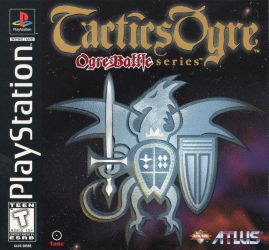




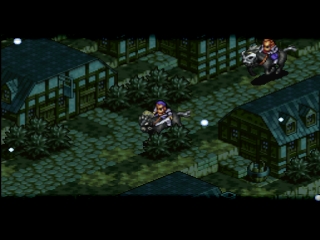
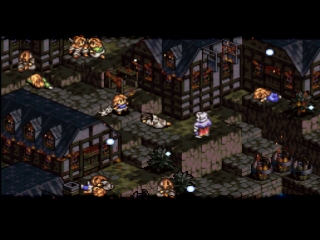
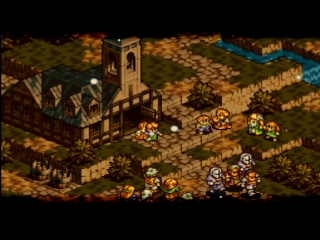
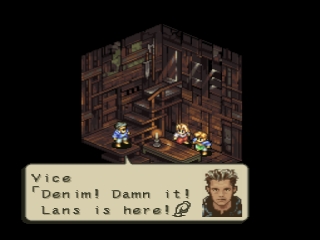
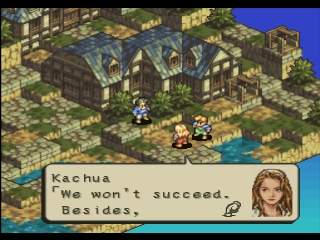
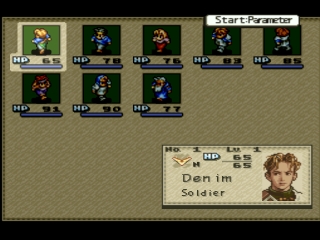
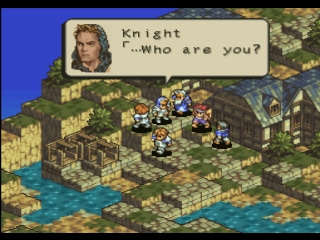
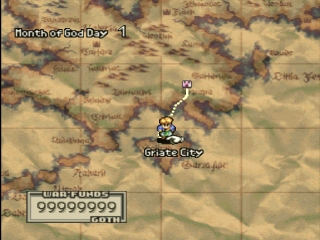
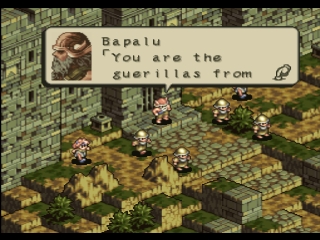
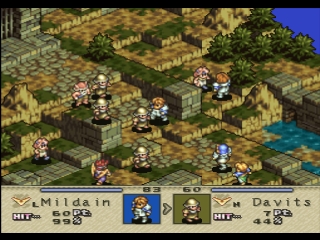
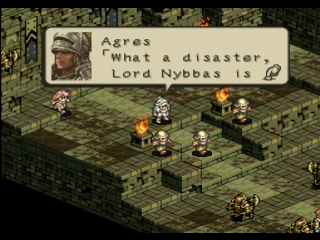
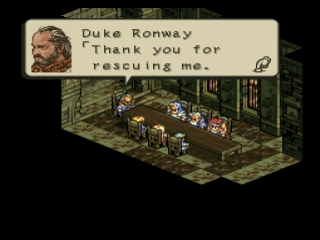
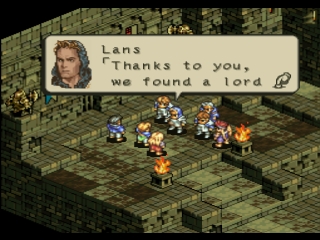
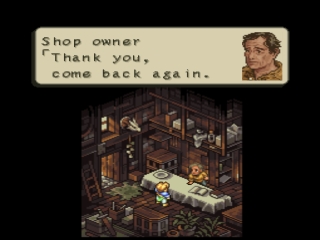
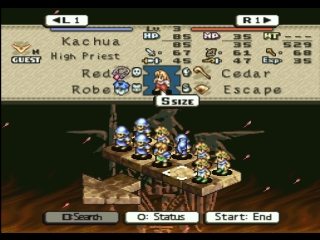
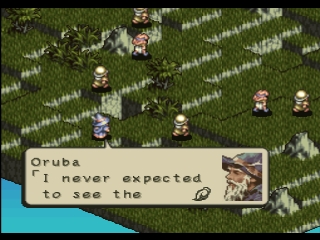
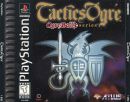
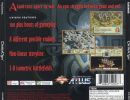


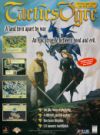
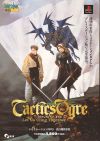
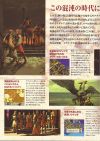
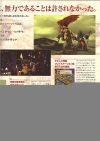
 - Disc Cover
- Disc Cover